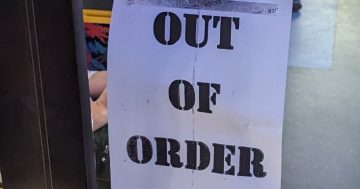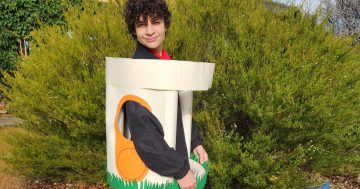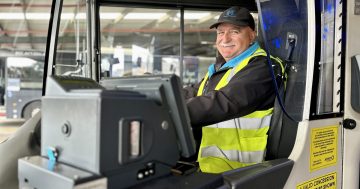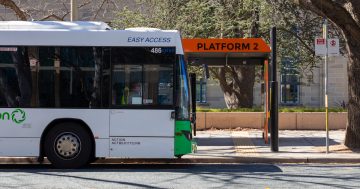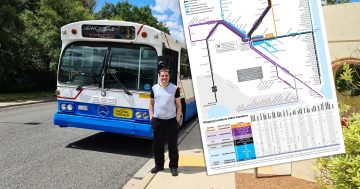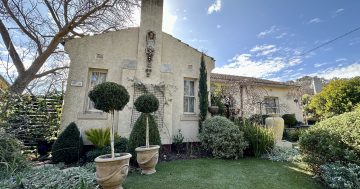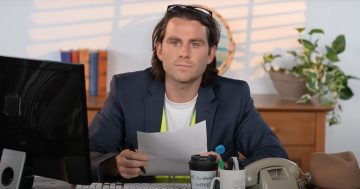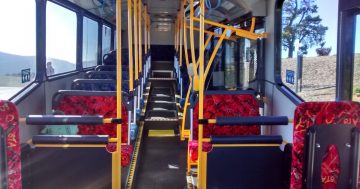
Victoria Wells is coming to the end of her epic adventures on Canberra buses. Photo: Victoria Wells.
To most of us, Canberra’s bus routes have a fairly singular purpose – to get us to and from work in medium-level comfort, preferably without sending us into the back of the seat in front every time there’s a stop. But to Victoria Wells, they’ve become much more.
Over the past year, Victoria has tackled every single one of Canberra’s 64 bus routes and published thoughts on each via her online blog, In Transit.
Today (28 November), she’s back where she started – her favourite – Route 53, from Dickson through the “beautiful suburbs” to the National Museum of Australia.
“When I set out on this adventure in January, I was not sure I would finish it,” she says.
“All 64 bus routes seemed like a big thing to do in one year, and I had more than one person tell me it was not possible to do. The reason I started the journey was so I had something to write about each week, but the adventure has given me a lot more than that.”
Victoria and her husband originally hail from England but moved to Canberra from country Victoria a couple of years ago. After a brief stint working for Pedal Power ACT, Victoria was overcome by the urge to give it up and commit to writing.
“I needed something to write about and I quite like travelling on buses, so I thought this was actually quite doable.”
Starting with Route 35, she initially plotted to do them in numerical order but found it more efficient to trek from her home in Lyneham to far-away locations like Lanyon Marketplace as few times as possible, so she combined a few routes by area.
Each post turned into roughly 2000 words and attracted about 25 regular readers in the process, some from as far away as the UK and US. Sounding out the city before they visit, maybe?
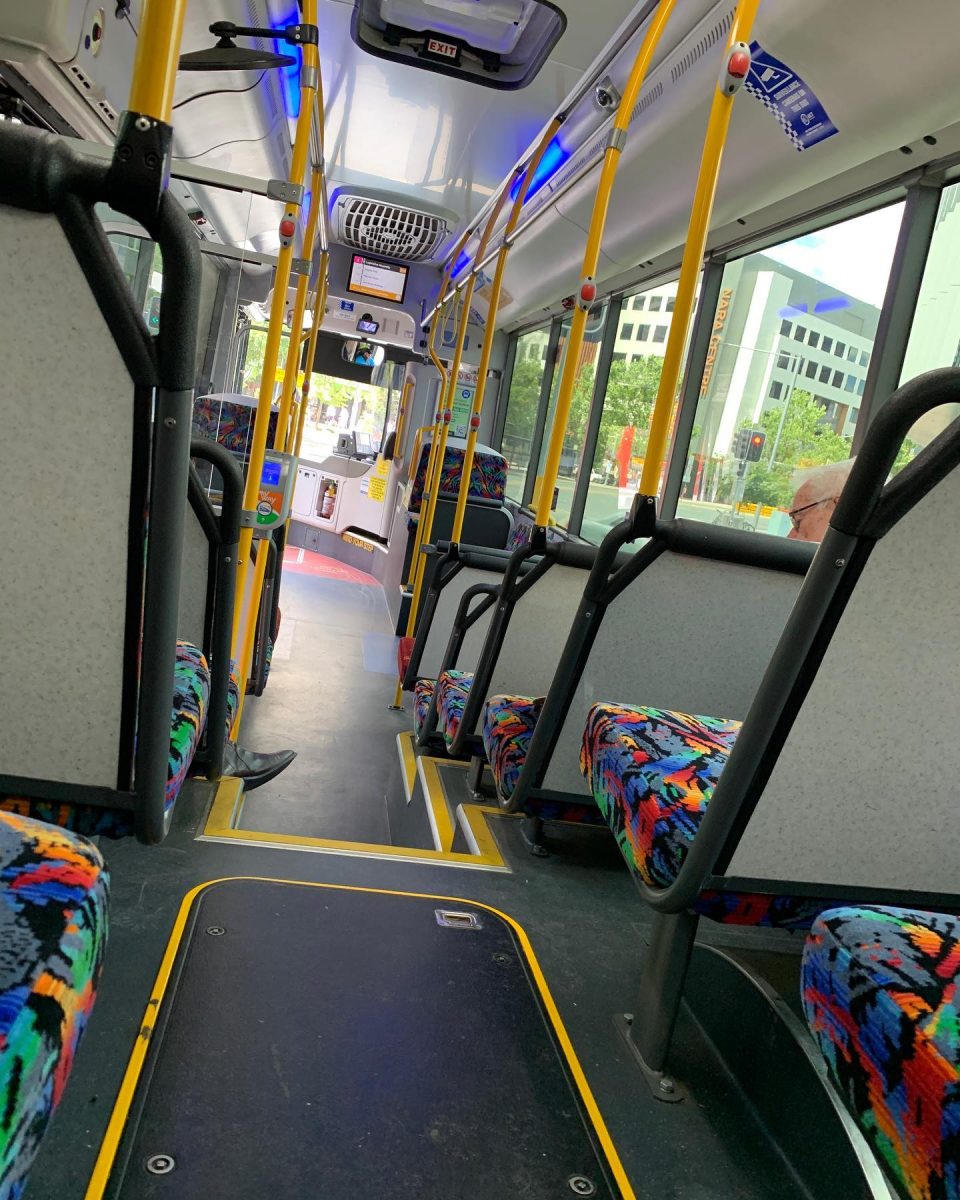
A familiar sight for bus-loving Victoria. Photo: Victoria Wells.
“I write about the scenery and the history because a lot of Canberra’s suburbs have points of interest in them,” she says.
“And I also write about the people I meet. It’s rare for me not to speak to strangers on a trip. Nobody has an ordinary life – everybody’s life is extraordinary and you just have to kind of scratch the surface a bit and you find that.”
She says most seem surprisingly comfortable to share personal information with those they think they’ll never meet again.
“I’ve heard about prostate operations. I’ve heard about men leaving women. I’ve heard about women’s huge anxiety attacks in the middle of shopping centres – really deep personal things.”
As for the drivers, they’re “absolutely fantastic” on the whole and appreciate those who interact with them.
“Not all of them drive brilliantly – some of them are a bit heavy-footed on the brake – but nobody’s dangerous. And if they’ve driven well, I always say, ‘Thank you so much – you drove really well today’. I said it to one guy and he teared up and said, ‘”Lots of people say thank you, but nobody ever tells me I drive well’.”
The rest of the bus experience is a mixed bag.
“What I’ve taken away is that the routes are really good, especially in the newer suburbs, but timetabling is a problem,” Victoria says.
“The frequency just isn’t enough.”
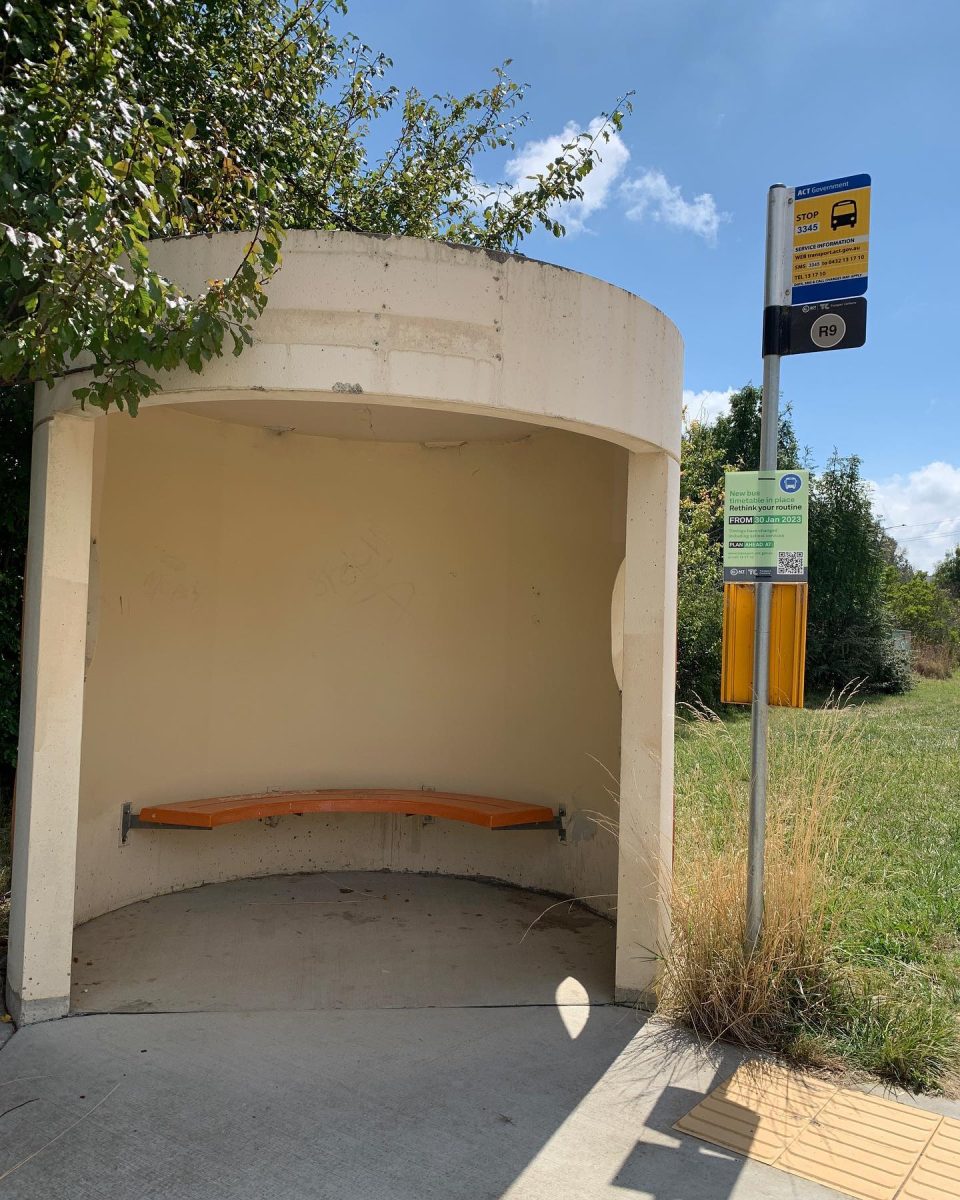
If you’re going to catch buses, you’re going to become familiar with these icons (like this gem in Watson). Photo: Victoria Wells.
She envies the “spoke and rim” approach of cities in New Zealand, where there are regular routes from the outer suburbs into the CBD and orbital routes that mean travellers can get between suburbs just as easily. At the moment, Canberra is more like “spaghetti”.
“It’s a bit of a mess and very difficult to navigate. Only because I’ve been doing it all year have I actually got my head around it.”
Two readers will join Victoria for her final voyage today. She’s still deciding what form her next writing project will take, but says it will definitely feature more talks with strangers.
“It’s why we like to read old diaries and autobiographies – it gives vignettes into how people live,” she says.
“Canberra is a very unusual city in Australia and it’s bagged a lot because of this, but I think it’s fantastic, and I hope that comes through in what I’ve written.”












